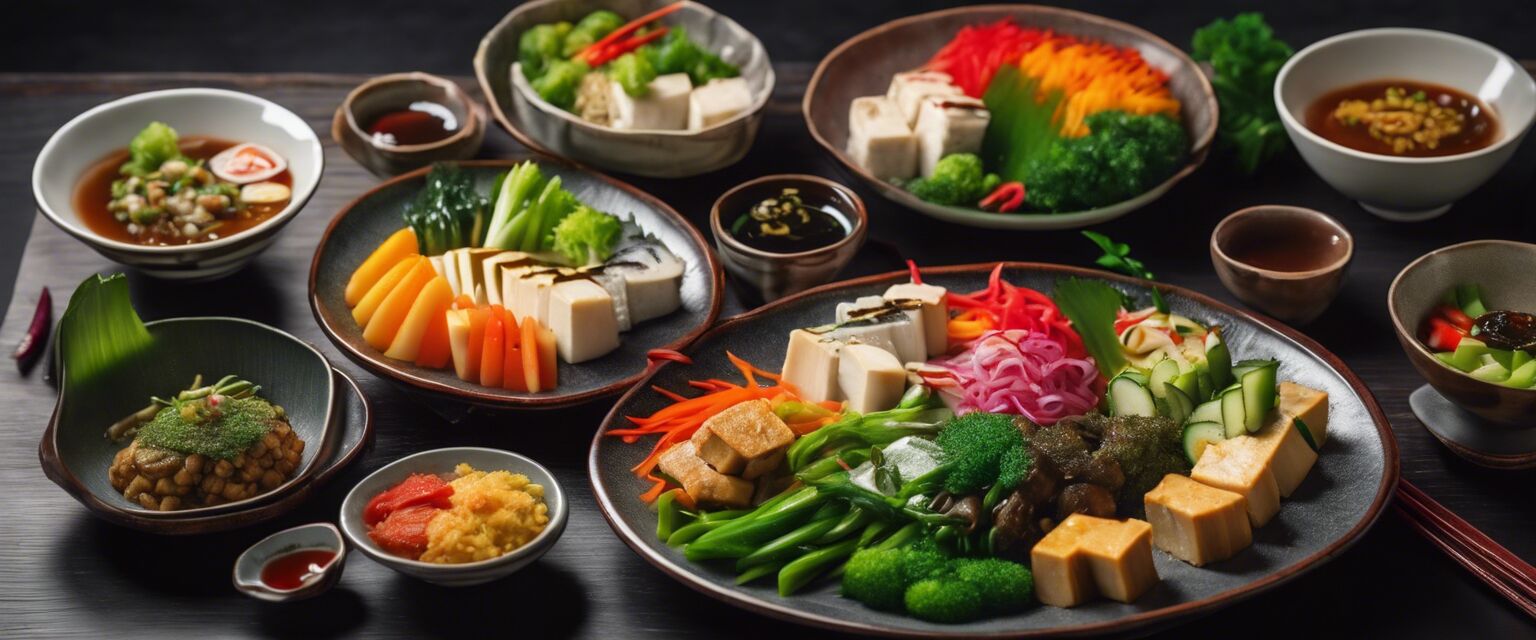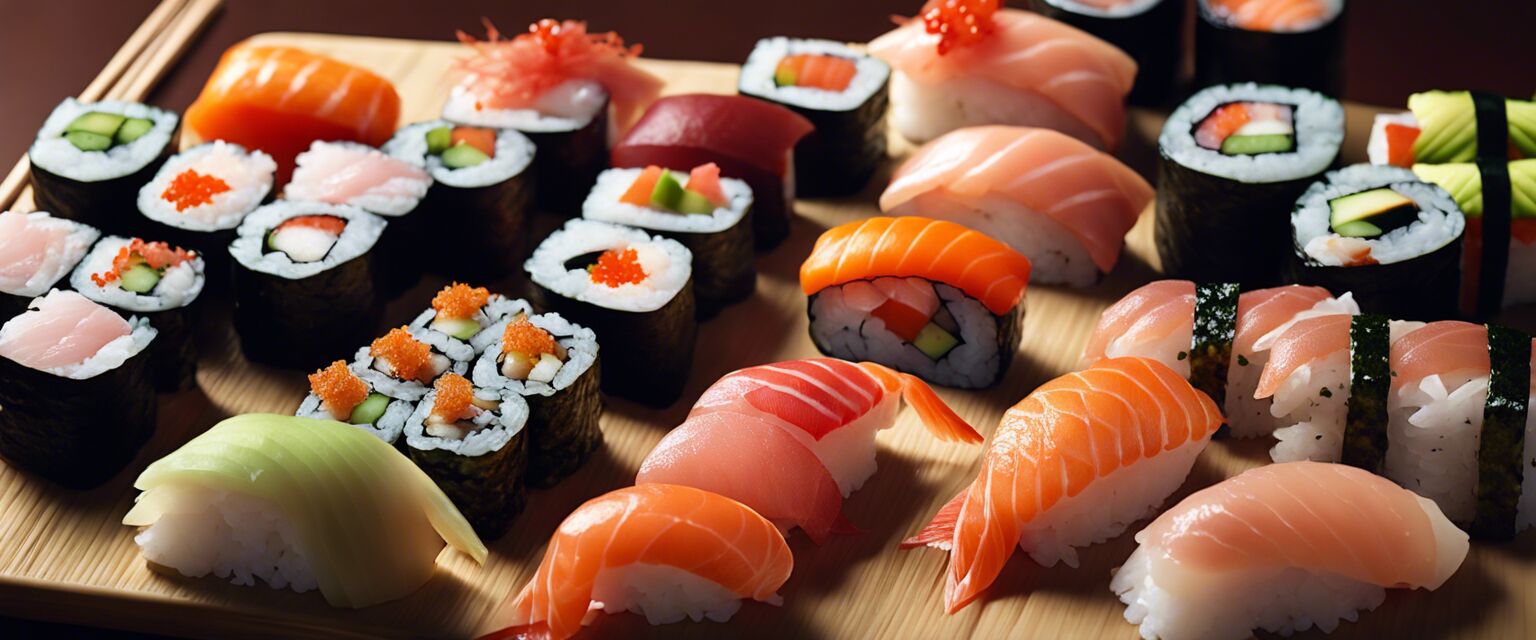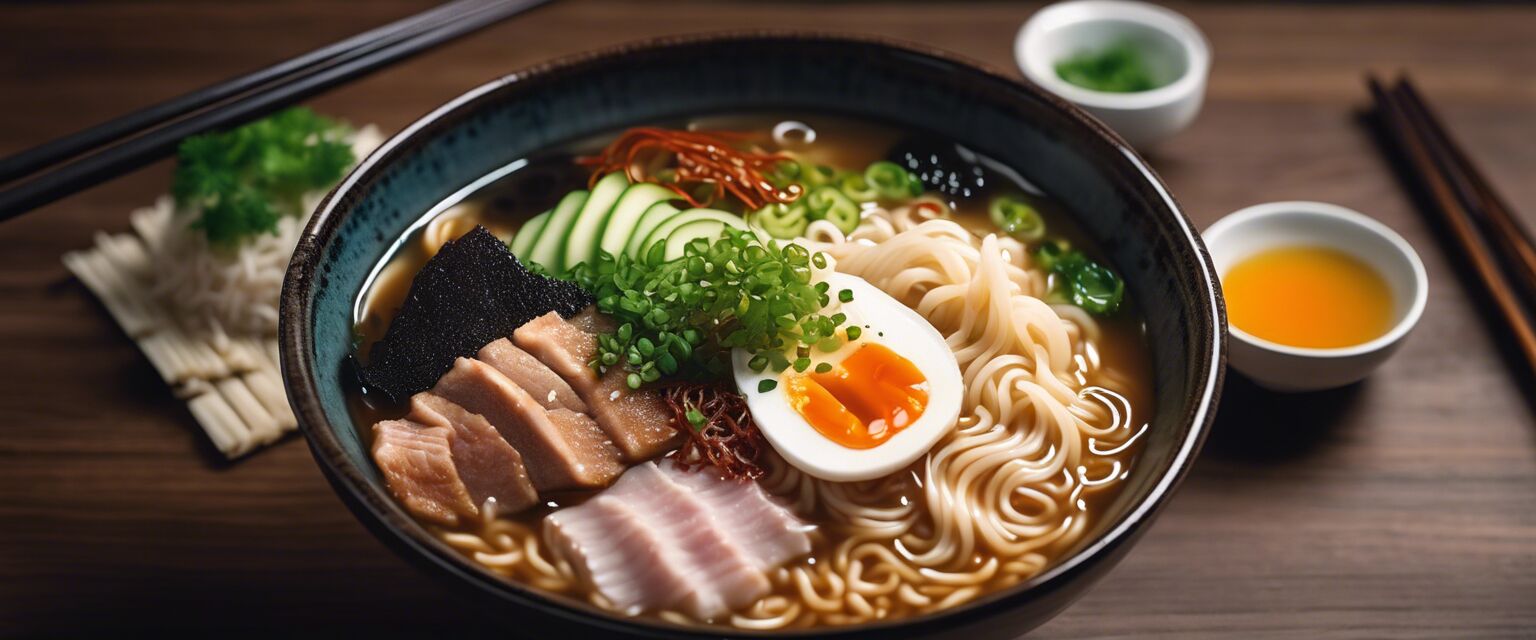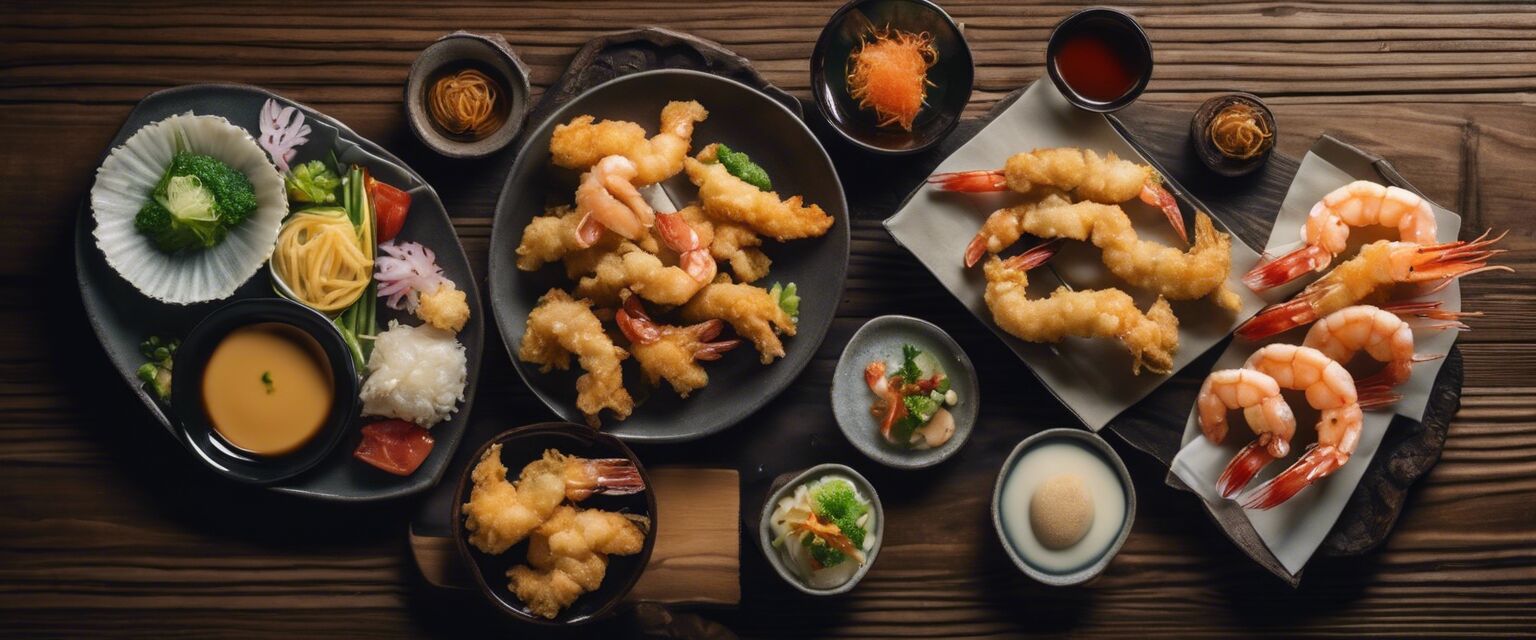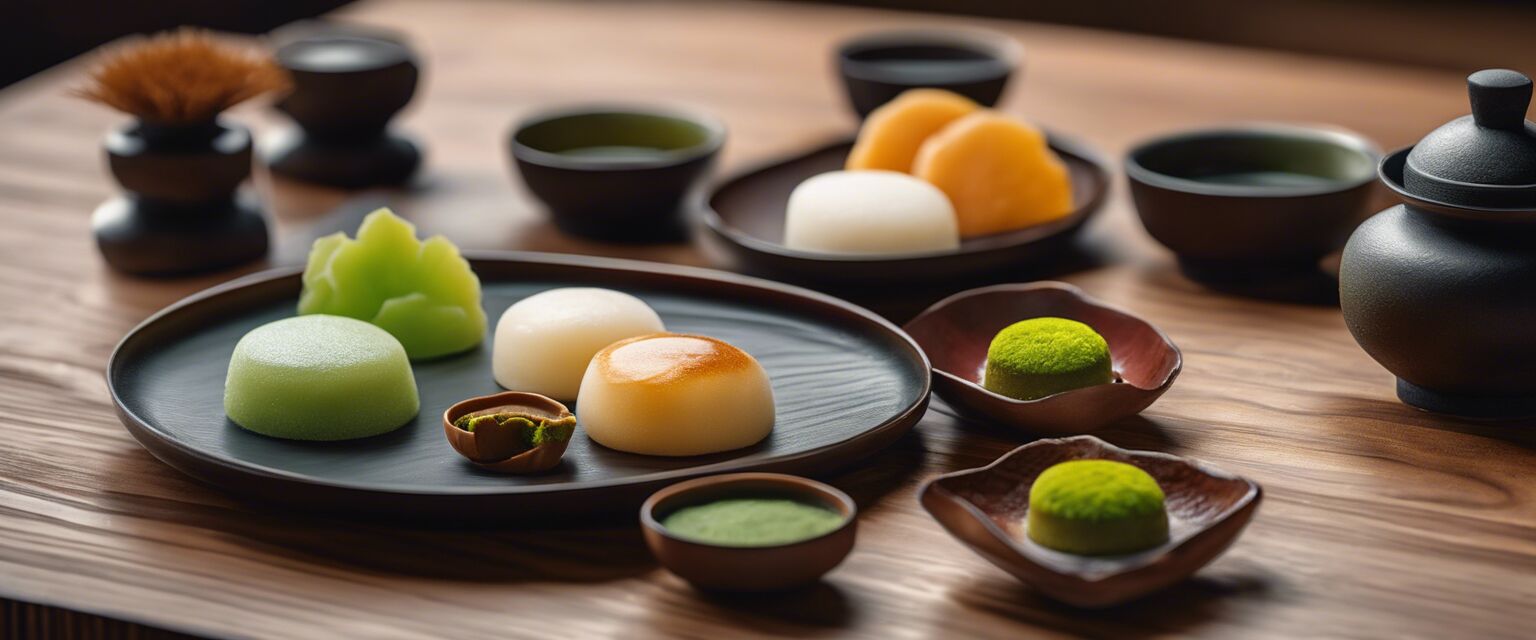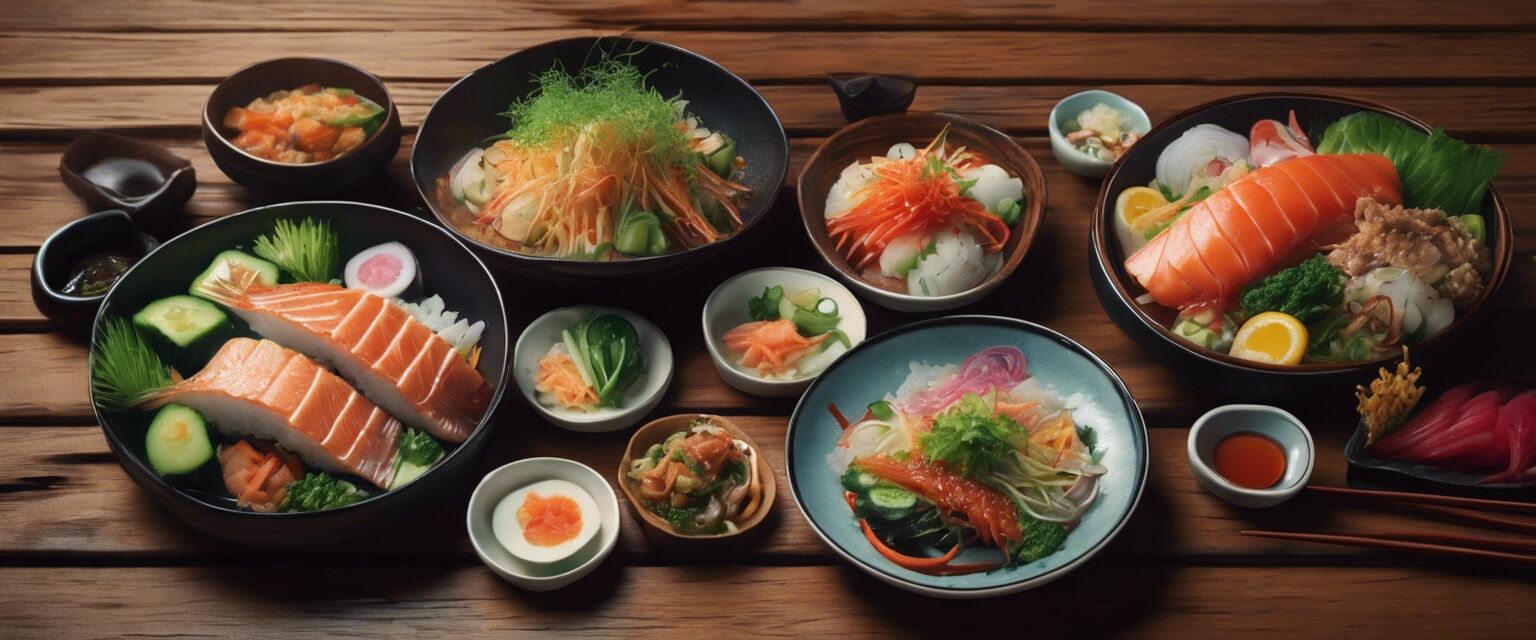
Healthy Japanese Foods
Key Takeaways
- Japanese cuisine is renowned for its balance of flavors and fresh ingredients.
- Many Japanese dishes are low in calories and high in nutrients.
- Incorporating ingredients like soy sauce, miso, and fresh vegetables enhances health benefits.
- Grilling, steaming, and eating raw are common healthy cooking methods in Japanese cuisine.
- Start cooking healthy Japanese foods at home by exploring recipes for salads, soups, and grilled items.
Japanese cuisine is more than sushi and ramen; it's a harmonious blend of flavors, techniques, and health benefits. This article dives into a variety of nutritious and delicious Japanese recipes, focusing on salads, soups, and grilled items. Through simplicity and fresh ingredients, Japanese cooking offers numerous ways to enjoy healthy foods at home.
Nutritious Ingredients in Japanese Cuisine
Japanese cooking often emphasizes seasonal ingredients, which play a key role in the overall healthiness of the dishes. Here are some commonly used ingredients that provide excellent health benefits:
| Ingredient | Benefits |
|---|---|
| Tofu | High in protein and low in calories |
| Seaweed | Rich in vitamins and minerals, including iodine |
| Miso | Probiotic properties for gut health |
| Fish | Source of omega-3 fatty acids and protein |
| Vegetables | Rich in fiber, vitamins, and antioxidants |
Salads in Japanese Cuisine
Japanese salads are an excellent way to incorporate fresh vegetables into your diet. Typically, these salads utilize light dressings and vibrant ingredients to create a deliciously healthy dish.
Popular Japanese Salad Recipes
- Seaweed Salad: A refreshing blend of different seaweeds tossed with sesame oil and vinegar.
- Japanese Cucumber Salad: Thinly sliced cucumbers dressed with soy sauce, rice vinegar, and a hint of sugar.
- Shredded Carrot Salad: Grated carrots mixed with sesame seeds and a lightly sweet dressing.
Soups to Try
Soups in Japanese cuisine are full of flavor and nutrients. They serve as a great starter or can be enjoyed main-course style along with rice.
Must-Try Japanese Soup Recipes
- Miso Soup: A savory broth made with miso paste, tofu, and seaweed.
- Soba Noodle Soup: Buckwheat noodles served in a light and flavorful broth with vegetables.
- Shoyu Ramen Soup: A rich soy sauce-flavored soup with noodles and seasonal toppings.
Grilled Delights
Grilling is a popular method in Japanese cooking, enhancing the natural flavors of ingredients while keeping meals low in fat.
Top Japanese Grilled Recipes
- Yakitori: Grilled chicken skewers seasoned with a sweet soy glaze.
- Grilled Fish: Fish seasoned simply with salt and grilled to perfection.
- Shishito Peppers: Lightly charred and sprinkled with salt for an easy appetizer.
Healthy Cooking Techniques
Utilizing healthy cooking techniques can greatly enhance the nutrition of your meals. Here are some common methods used in Japanese cooking:
| Technique | Description |
|---|---|
| Grilling | Cooking over direct heat adds flavor without excess fats. |
| Steaming | Retains nutrients while keeping the food moist and tender. |
| Raw preparations | Enjoying fresh ingredients minimizes nutrient loss. |
Tips for Cooking Healthy Japanese Foods at Home
Beginner's Guide
- Start with staple ingredients like soy sauce, miso, rice, and seaweed.
- Experiment with different fresh vegetables to find your favorite combinations.
- Try out various cooking techniques to see which you enjoy the most.
- Look for traditional recipes and adapt them to include healthier ingredients.
- Don't hesitate to mix and match flavors from different dishes for unique creations.
Conclusion
Healthy Japanese foods offer vibrant tastes and wholesome ingredients that are easy to prepare at home. By trying your hand at cooking Japanese salads, soups, and grilled items, you'll not only enjoy delicious meals but also embrace a healthier lifestyle. With simple ingredients and straightforward techniques, anyone can bring the essence of Japanese cuisine to their dining table.
Pros
- Emphasis on fresh and seasonal ingredients.
- Offers a variety of nutritious options.
- Many dishes are quick and easy to prepare.
- Health-conscious cooking methods.
- Delicious flavors from minimal ingredients.
Cons
- Some ingredients may be difficult to find.
- Might require adjustments for dietary restrictions.
- Certain techniques can be challenging for beginners.

